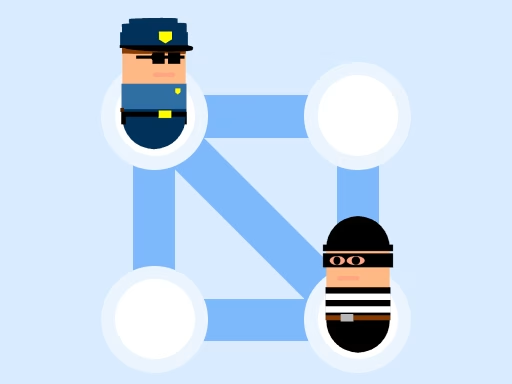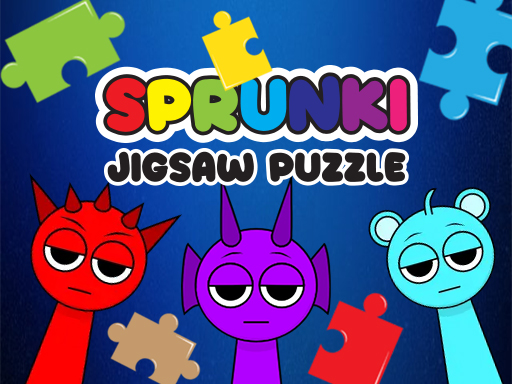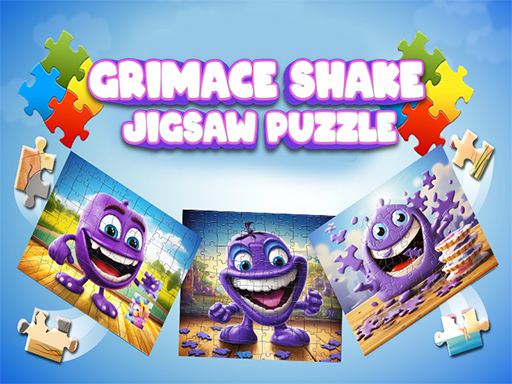
Help Police: Outsmarting the Thief Through Puzzle Logic and Strategy
The Thrill of the Chase
Imagine this: the prison alarm blares, lights flash across the courtyard, and a sly thief slips through the gate. Your squad of officers is the only barrier between him and freedom. That’s the world of Help Police, a logic puzzle game that turns strategy and anticipation into pure excitement.
The goal seems simple—trap the thief so he has no available moves—but simplicity is deceptive. Every level challenges you to think ahead, plan carefully, and anticipate your opponent. And just when you think you have it figured out, the thief finds a gap you didn’t expect.
What makes Help Police addictive is this constant mental tug-of-war. Each level builds on the last, introducing new officers every 10 levels. Suddenly, your simple tactics need to evolve, and every move feels significant. Are you ready to lead the squad?
Understanding the Rules
Before we dive into strategy, let’s clarify the basic rules:
-
You control a squad of police officers.
-
The thief moves freely unless blocked.
-
The goal: position officers so the thief cannot move.
-
New officers unlock at intervals (every 10 levels), adding layers of strategy.
-
If the thief escapes, you restart the level.
The brilliance of the game is in its simplicity. While the rules are easy to grasp, executing them perfectly requires logical foresight. Think of it like chess: each piece affects the board, and one misstep can unravel your plan.
Early Level Strategies: Laying the Foundations
In the first levels, your main goal is to learn how the thief behaves. Here’s a starter guide:
-
Control the Corners: The thief is likely to escape toward open edges. Placing an officer near a corner reduces options quickly.
-
Use the Center: Officers in central positions can influence more tiles, cutting off multiple escape routes at once.
-
Observe Movement Patterns: Watch the thief’s decisions and predict likely paths.
A story from the community: Sarah, a beginner, misjudged the first thief’s path and laughed at her own blunder. “I thought I had him, but he slipped past like a shadow,” she said. Her lesson? Observation is key.
Mid-Level Challenges: Unlocking New Officers
Once new officers appear every 10 levels, your tactics must evolve. Suddenly, you have extra resources but also more moving parts to coordinate.
Tips for mid-level play:
-
Layered Blocking: Place one officer close to the thief while a second backs up the first. It’s like a pincer movement in real combat.
-
Funnel the Thief: Guide him toward corners or trapped areas rather than chasing directly.
-
Save Special Officers: Some new officers have unique movement abilities; timing their placement can be decisive.
Imagine this scenario: Raj, a mid-level player, positioned two officers in a triangular formation. The thief had only one escape tile left and stumbled into a trap. The rush of victory made him laugh uncontrollably, showing how strategy and fun mix beautifully.
Advanced Tactics: Thinking Ahead
High-level Help Police requires foresight. Every move changes the available options, and one miscalculation can let the thief escape.
Advanced tactics include:
-
The Net Method: Visualize an invisible “net” around the thief and tighten it gradually.
-
Predictive Movement: Anticipate the thief’s most likely path two or three steps ahead.
-
Sacrificial Positioning: Sometimes, placing an officer in a less obvious spot forces the thief into your main trap.
These strategies make you think like a commander. One community story: Luis spent hours planning a level, imagining every possible thief move. When the thief finally got cornered, he described it as “chess against a shadow,” highlighting the depth of the game.
Patterns and Formations
Recognizing patterns is crucial. Over time, certain arrangements of officers become reliable traps.
Common formations:
-
Triangle Trap: Three officers form a shrinking triangle around the thief, leaving minimal escape tiles.
-
Square Block: A simple four-officer square that controls edges and corners efficiently.
-
Staggered Lines: Prevent the thief from jumping straight past your squad by staggering positions.
Players often discover their own “signature formation.” For example, Maya uses a zigzag pattern for mid-level puzzles, claiming it feels like “leading the thief on a tiny adventure before catching him.”
Common Mistakes and How to Avoid Them
Even skilled players make errors. Here are pitfalls and how to fix them:
-
Overcrowding: Too many officers in one area limits flexibility. Spread wisely.
-
Ignoring Corners: Corners are prime escape routes; always monitor them.
-
Rushing Moves: Patience is essential. One hasty placement can ruin the plan.
A fun anecdote: Liam accidentally trapped himself while trying to block the thief. “I was more trapped than him!” he laughed. Mistakes are part of learning—and part of the game’s charm.
Timing and Patience
Help Police isn’t about speed; it’s about precision. Take your time, plan your moves, and anticipate outcomes. Click on a policeman, review all available moves, and visualize the thief’s responses.
Tip: If stuck, step away for a minute. Returning with a fresh perspective often reveals the winning move.
Utilizing All Officers Effectively
Every officer has potential, and placement matters. Consider these:
-
Frontline Officers: Close to the thief to immediately block movement.
-
Backup Officers: Positioned slightly behind, ready to intercept escape routes.
-
Corner Guards: Focus on edge tiles where the thief tends to flee.
Efficiency is about balance. Overcommitment or neglect of one area can undo all your planning.
Making the Game Engaging
Beyond strategy, Help Police thrives on immersion. Players often create mini-stories: imagining their squad as a heroic team, each officer with a personality.
Example: Emily names her officers after famous detectives and narrates their moves aloud. “Detective Holmes moves to intercept! Watson is in position!” These playful narratives increase engagement and make even failed attempts enjoyable.
Integrating Shortcuts and Hints
Many levels offer hints or special moves. These should be used wisely:
-
Use Only When Necessary: Over-reliance can reduce your problem-solving skills.
-
Observe First: Sometimes hints show only the obvious; careful observation may solve it faster.
-
Learn From Hints: Notice patterns in the hints for future levels.
Mental Benefits of Playing
Help Police does more than entertain. It develops:
-
Critical Thinking: Evaluating multiple options simultaneously.
-
Strategic Planning: Coordinating several pieces on a dynamic board.
-
Problem-Solving Under Pressure: Making decisions in a confined, high-stakes environment.
-
Focus and Patience: Avoiding rushed mistakes.
Players often feel a real sense of accomplishment after completing tough levels, a satisfying mental reward.
Community and Sharing
Online communities share solutions, funny stories, and level screenshots. Discussing strategies fosters a sense of teamwork even in a solo game.
One story: a group of friends raced to complete a particularly tricky level. Every success was met with laughter, and failure sparked playful teasing. The game becomes more than a puzzle—it’s a social experience.
Humor in Help Police
Even while strategizing, the game invites humor:
-
“Why did the thief go to the gym? To outrun my officers!”
-
“I swear my policeman tripped just to make me laugh.”
Humor balances tension, making the game fun even when you’re stuck on a tough level.
Practical Tips for Beginners
-
Start Simple: Learn how the thief moves in early levels.
-
Think Ahead: Visualize multiple moves in advance.
-
Use All Officers: Don’t rely on a single piece to do everything.
-
Control the Center: Central positioning gives versatility.
-
Observe Patterns: Recognize thief behavior to predict movement.
Advanced Tips for Experts
-
Layered Blocking: Two officers work in tandem to reduce escape routes.
-
False Exits: Lure the thief into a trap by leaving one path seemingly open.
-
Stepwise Tightening: Gradually shrink the area the thief can move in.
-
Corner Awareness: Corners often dictate the thief’s options; monitor carefully.
Comparing Help Police to Other Logic Games
| Game | Core Goal | Similarity | Difference |
|---|---|---|---|
| Chess | Checkmate | Strategic moves | Multiple piece types |
| Sudoku | Fill grid logically | Pattern thinking | Numbers, static board |
| Help Police | Trap thief | Prediction | Dynamic pursuit |
| Minesweeper | Avoid mines | Strategic choice | Chance element |
Stories of Triumph
Many players cherish their toughest victories. For instance, Omar finally trapped a thief on level 47 after an hour of planning. He described it as “like catching a ghost after a long chase”—a moment blending relief, satisfaction, and pride.
Why Players Keep Returning
Help Police keeps you engaged because each level balances challenge and reward. Failing is part of the fun—every failure teaches a new strategy. Every victory feels earned, fueling your desire to try the next level.
Encouragement for New Players
Are you ready to join the squad? Start slowly, watch the thief’s patterns, and don’t get discouraged by early failures. Every level mastered strengthens your logical thinking, patience, and strategic planning.
Conclusion: Step Into the Game
Help Police is more than a puzzle—it’s strategy, storytelling, and brain training all in one. Whether you’re a casual player laughing at your mistakes or a strategist meticulously planning each officer’s placement, the game rewards your thinking, observation, and creativity.
So, are you ready to catch the thief? Lead your squad, anticipate every move, and enjoy every twist in the chase. Victory awaits! 🕵️♂️
For Your Social
#HelpPolice #PuzzleGames #LogicChallenge #CatchTheThief #StrategyGaming #BrainTraining #GamingTips






